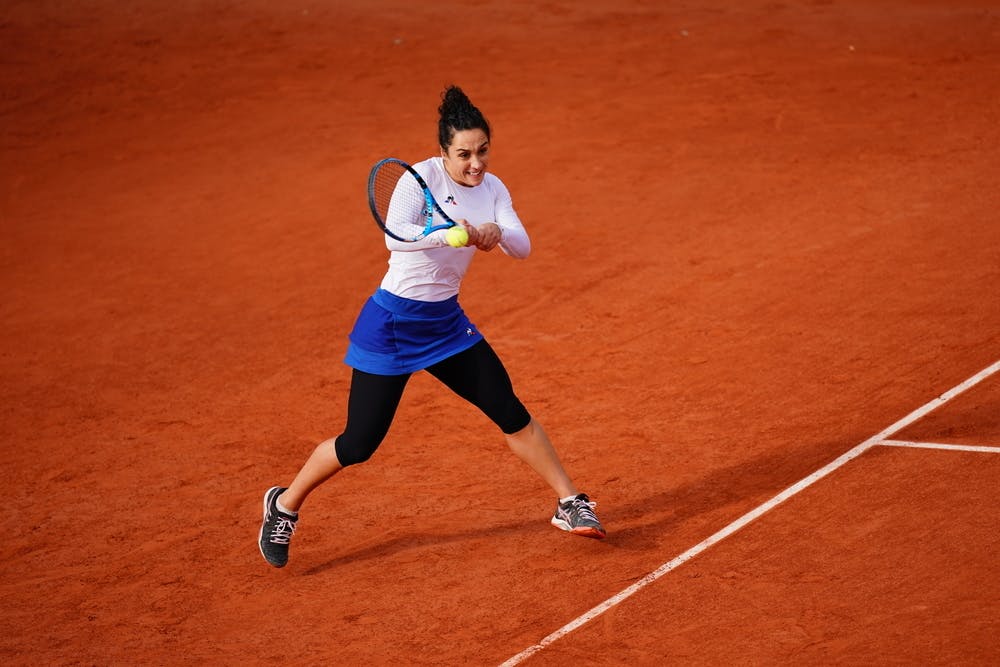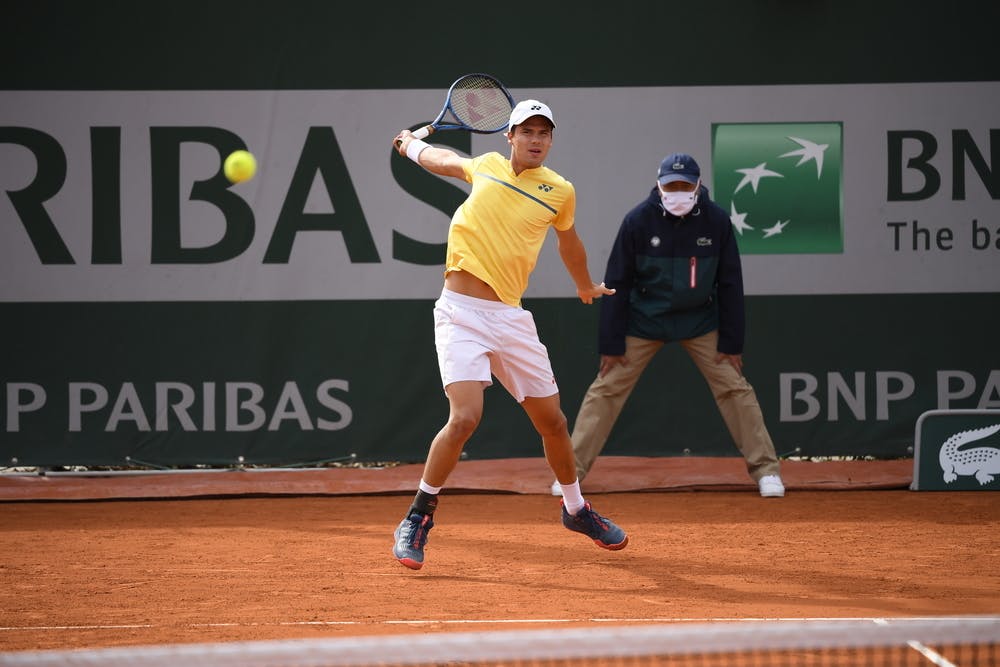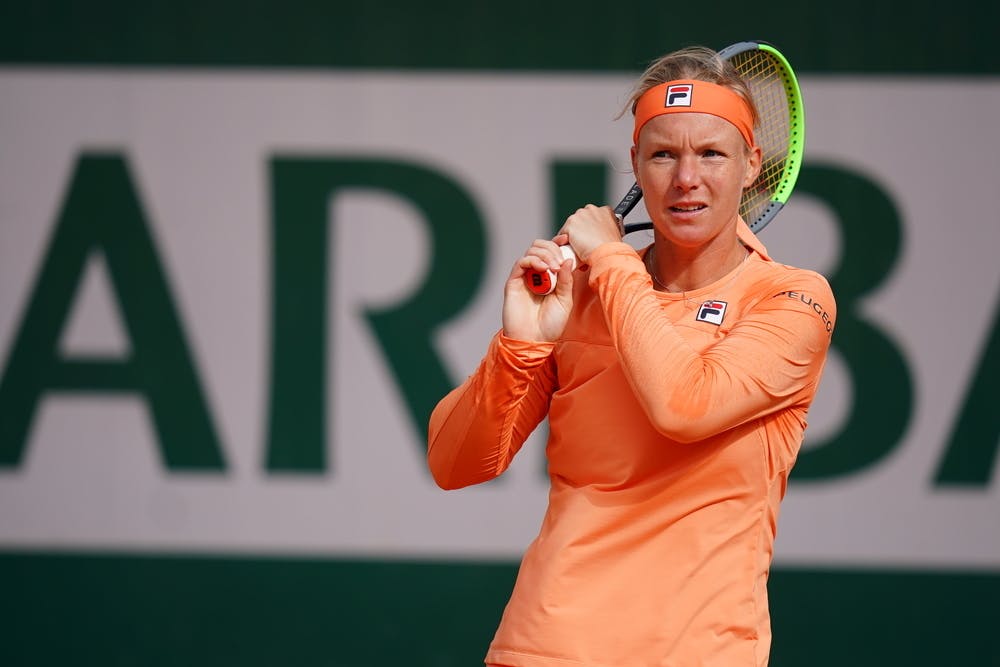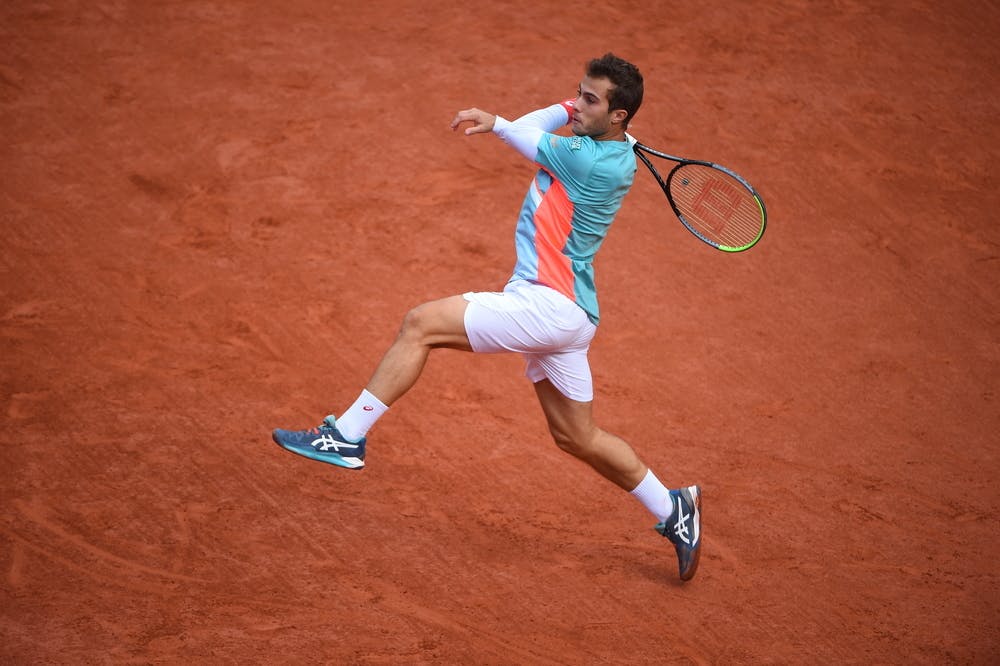Weather always plays a factor when it comes to competing on Parisian clay, whether the tournament is being staged in its usual May-June slot, or in the autumn, as it is right now.
The heavier conditions this fortnight have been challenging for some players and it's the ones with a greater capacity to adapt who have managed to excel.
“The conditions this year at Roland-Garros are totally different than the past years,” said Alex Corretja, a two-time finalist at Roland-Garros, who is working as an analyst for broadcaster Eurosport during the event.
“The balls are heavier, it’s cooler and the clay is much more wet. So that evens the matches in a way.”
Nguyen agreed. “These are heavy conditions and the balls aren’t kicking up, and that hurt Kiki and Simona,” she said.
Lack of match play
A five-month coronavirus-induced hiatus has wreaked havoc with the global sporting calendar this year and it meant that many players didn't get a chance to compete much on clay ahead of the action in the French capital.
There was an abrupt surface change from hard courts in North America to clay courts in Europe - a switch that is not as tough as the clay-to-grass transition typically experienced between Roland-Garros and Wimbledon, but one that is challenging nonetheless.
“This year has been a mess for everyone” said Corretja. “Lack of rhythm, lack of tournaments, so many months without competition...Now, everybody is almost starting from zero,” said the Spaniard.
“There is no reference. It’s only one or two tournaments on clay before Roland-Garros and the conditions are tough. It’s difficult just to be better than the other players.”
Players who have gone through qualifying have an edge this year, especially on competitors who skipped the US Open, such as Bertens.
“Those three matches that you have under your belt the week before, it gives you the chance to get used to the conditions, to the balls and also to the bubble, which is a very unique situation this year,” explained Corretja.
More depth in field
Nine of the 16 women into the fourth round had never reached that stage before in Paris, while six of them had never got to the second week of any major.
On Sunday, unseeded Polish teenager Iga Swiatek pulled off the biggest upset of the week as she dropped just three games to beat former champion Halep of Romania to reach her first Grand Slam quarter-final. For the first time since 1978, there are two qualifiers in the last eight: Argentina’s 131st-ranked Nadia Podoroska, and the 159th-ranked Italian Martina Trevisan, who knocked out Holland’s Bertens.
 ROLAND-GARROS
19 May - 8 June 2025
ROLAND-GARROS
19 May - 8 June 2025


 © Nicolas Gouhier/FFT
© Nicolas Gouhier/FFT © Julien Crosnier / FFT
© Julien Crosnier / FFT © Nicolas Gouhier/FFT
© Nicolas Gouhier/FFT © Corinne Dubreuil/FFT
© Corinne Dubreuil/FFT